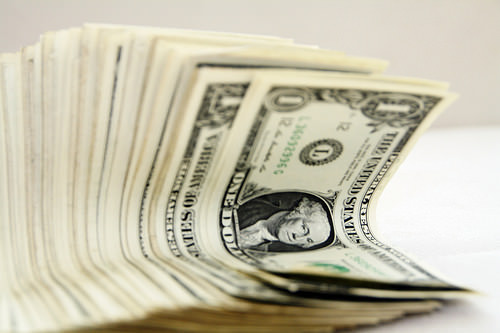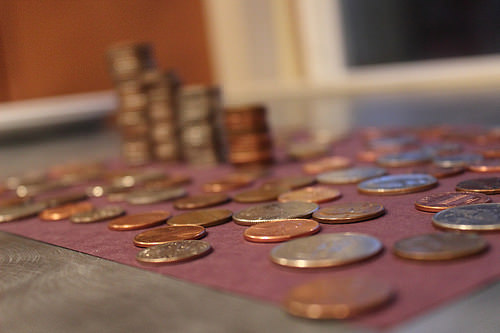A Simple Look at Quantitative Easing
Defining the formidable, yet surprisingly elementary term
By Aziel Goh, Staff Writer
If you’ve done anything apart from taking an extended vacation to the sleepy town of Pyongyang over the past year, you’ve probably seen or heard the term quantitative easing (QE) before. Over the past few years, the term has been thrown around everywhere, from magazines to the evening news broadcast. Despite the fancy, and somewhat of an ambiguous sounding name, the concept of QE is actually a rather simple one.
Under normal conditions, a nation’s central bank will change the official interest rate in order to achieve a desired economic outcome. To do so, the central bank will buy and sell securities in the overnight market (a market where the central bank trades securities with a select few financial institutions) until they have reached their desired interest rate. This lower interest rate primarily stimulates spending in the economy through an increase in the incentive to borrow (in turn, resulting in more expenditure) while simultaneously decreasing the incentive to save (as the return received is lower).

Courtesy of 401(K) 2013
This reduction of short-term interest rates cannot fall further than 0%. When it does approach this zero bound limit, such as what has happened in the USA and Japan, the policy focus then shifts to increasing the supply of money. This is where quantitative easing comes into play.
What is quantitative easing?
Quantitative easing, as defined by the Oxford dictionary, is ‘the introduction of new money into the money supply by a central bank.’ Simply put, it’s an alternative method used by a nation’s central bank to inject more money into the economy.
[pullquote]Simply put, it’s an alternative method used by a nation’s central bank to inject more money into the economy.[/pullquote]
Basically, how QE works is that firstly the central bank electronically credits their accounts with money (yes, out of thin air). With this money, the central bank purchases long-term securities from financial institutions (commercial banks, pension funds, insurance companies, etc.).
Basic demand and supply tells us that an increase in these long term securities will lead to an increase in the price of these securities and in turn, a lower interest rate. The funds received by these financial institutions from these long-term securities are then lent out to individuals and businesses. This will increase consumer and business spending, boosting the output of the nation.
The benefits of quantitative easing
The policy’s primary goal to stimulate economic growth is also achieved in various ways outside of directly increasing net consumer and business spending. As the long-term interest rates decline, investors receive a lower return, and there will be a decline in foreign capital coming into the nation.
This fall will result in a lower demand for the nation’s currency, and thus, weakening the nation’s currency (especially against other nations who have not implemented quantitative easing). A weaker currency against trade partners makes exports more attractive, and imports less attractive domestically. It will therefore eventuate to an increase in net exports and output.
Additionally, this increase in current demand, combined with the increase in the supply of money, allows a nation to avoid any problems of deflation that it may have been potentially facing. The downward pressure placed on long-term interest rates and a symbolic commitment declared by a nation’s central bank to economic recovery help to boost business and consumer confidence.
Risks associated with this monetary policy
Indeed, this is not a risk free policy. If too much money is added to the money supply, this can result in an increase in inflation rates to above desirable levels (and if not managed properly, it could perhaps even result in hyperinflation). In addition to fears of hiking inflation levels, the influx of cash pumped into the economy by the central bank for the purpose of bettering economic growth mightn’t be achieved due to a wide variety of factors. Banks may decide not to lend out the money and instead to cushion up their balance sheets in anticipation of further economic uncertainty and further defaults by borrows.
Likewise, consumers and businesses might not want to borrow further, despite a decrease in the cost of borrowing, due to poor business and consumer sentiment. However, even if consumers are willing to borrow and spend the extra cash in the economy, money could be spent investing in speculative assets (rather than household consumption and business capital investments) or perhaps be used to invest overseas – both of which would not result in the desired output growth hoped for by the central bank.
How quantitative easing differs from printing money
Now, before you get too excited at the prospect of becoming a zillionaire due to your nation turning into the next Zimbabwe, there are a few key differences to note between quantitative easing and the black hole of printing money in order to fund federal debts and deficits.

Courtesy of CassadeyFedel
Firstly, the credit created during the process of quantitative easing is used to purchase long-term securities from financial institutions rather than merely printing money in order to finance government obligations. As this is a measure to combat deflation, it is a monetary policy measure that is in line with the central bank’s key goals. Printing money to pay off government creditors is not.
Additionally, this is a temporary policy primarily designed to stimulate growth in the economy, and once achieved, the purchased securities will be sold back into the free market.
In saying this, however, the choice between implementing and not implementing quantitative easing measures is truly a choice between bad and worse, and is a last resort monetary policy when the central bank’s back is against the wall. The outcome of inaction is declining economic growth and the risk of deflation, however, if properly managed, it results in greater consumption and output.
As you can see, a basic understanding of quantitative easing, the benefits and risks associated with it, and how this policy differs from merely printing money can be fairly simple. Hopefully this has cleared up any confusion you may have had about quantitative easing, and how it is actually different from Ben Bernanke throwing $85B worth of freshly minted Benjamins down Wall Street like some sort of Tyga music video. Who knows, maybe QE4 will be a little different.
Aziel is a second-year student at The University of Melbourne studying a Bachelor of Commerce majoring in Finance and Accounting. You can reach him at: au.linkedin.com/pub/aziel-goh/57/260/705/




























Share the post "A Simple Look at Quantitative Easing"